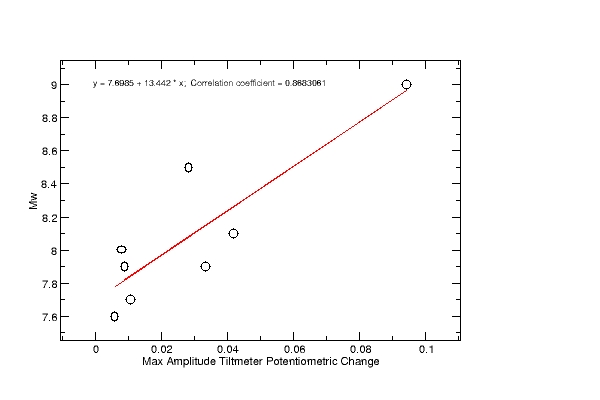Tiltmeter Response to Large Subduction Zone Earthquakes
 Plate Tectonics and Subduction Zones
Plate Tectonics and Subduction Zones
Many instruments designed for specific scientific measurements have later proven useful in other applications. By design, Very Long Baseline Tiltmeters (VLBT) record only the vertical field of deformation for low frequency motion. Two equipotential water elevation measurements at each tiltmeter end are differenced -such as in interferometetry- resulting in a dimensionless measure of tilt expressed in terms of radians. In fact, due to the length of VLBT (sometimes over 3,000ft for both arms) and micrometer sensitivity in potentiometric measurements, a tiltmeter can register angular changes as small as a few nanoradians (1/2 millionth of a degree). In addition to being confined to the vertical field, tiltmeters are also temporally limited to periods of 15 to 30 minutes. This period of resolution is determined by fundamental physical properties of the water in the tiltmeter pipe creating an inherent instrument resonance like the fundamental mode of a seismometer. Unlike a seismometer, this resonance is actually a pipe sache, or put plainly, a water-wave traversing the pipe length.
For these reasons tiltmeters are tuned for measuring earth motion at long-periods such as slow earthquakes (ETS). Even the longest period seismometers are constrained to motions under 15 minutes leaving only GPS and strainmeters with proper temporal resolution for recording ETS. Geodetic GPS measurements, however, have large uncertainties in the vertical field and strainmeters are subject to years of drift following installation. With the long-period and minute vertical resolution as well as instant stabilization, VLBT nicely augment existing record sections providing new insights into ETS.
That said, it's still good to have sanity checks on these technical instruments from time to time. And although we mentioned tiltmeters have a fundamental frequency in 10's of minutes, the actual sample rate is 60Hz with data averaged and recorded every minute. This high sample rate not only eliminates aliasing, but allows us to record pipe saches. A novel attribute of VLBT can thus be seen in large-scale megathrust earthquakes occuring across the Pacific Ocean.
Data Below are Millimeter Changes in Freewater Surface of a
Tiltmeter During Earthquakes of Mw > 7.5
*note: the dominating sinusoidal signals are the diurnal and semi-diurnal solid earth tidesDecember 2004 Macquarie Island and Sumutra Earthquakes in Elevations of Each Separate Tiltmeter Sensor
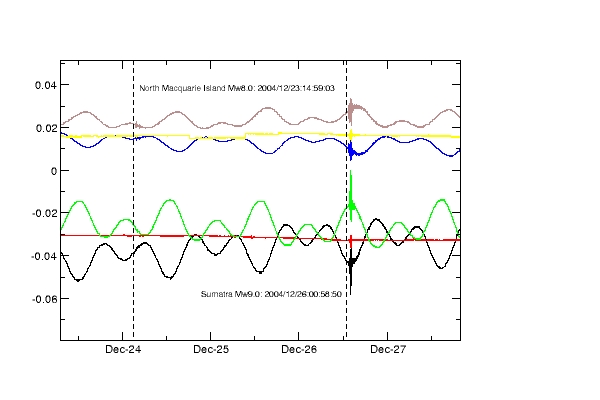
Sumatra Mw9.0: 2004/12/26:00:58:50

Southern Sumatra Mw8.5: 2007/09/12:11:11:17 and Kepulauan Mentawai, Indonesia 7.9Mw: 2007/09/12:23:49:04
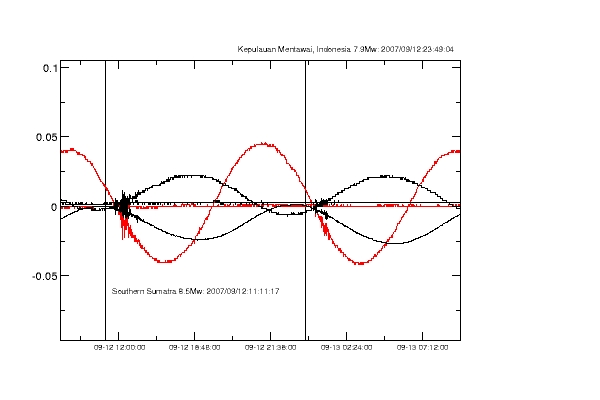
Eastern Sichuan, China Mw7.9: 2008/05/12:06:28:01 UTC
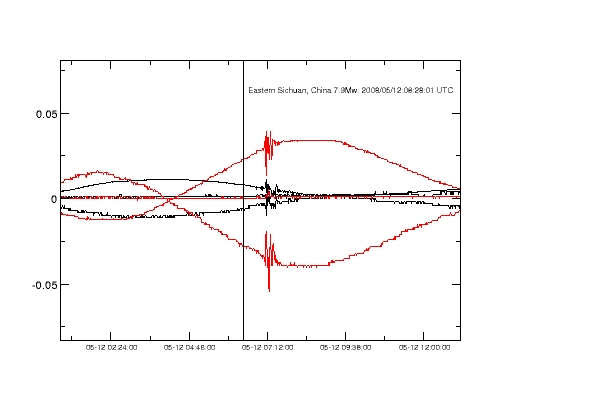
Sea of Okhotsk Mw7.7: 2008/07/05:02:12:28.7
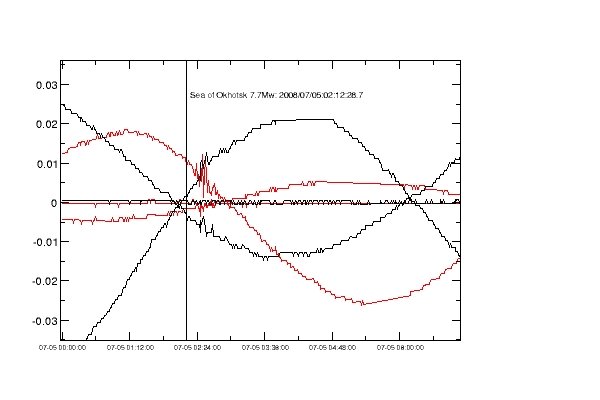
East of the Kuril Islands Mw8.1: 2007/01/13:04:23:20 UTC
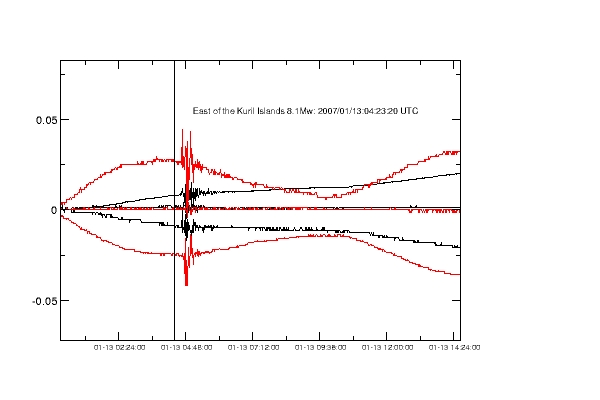
Tonga EQ Mw7.6: 2009/03/19:18:17:38 UTC
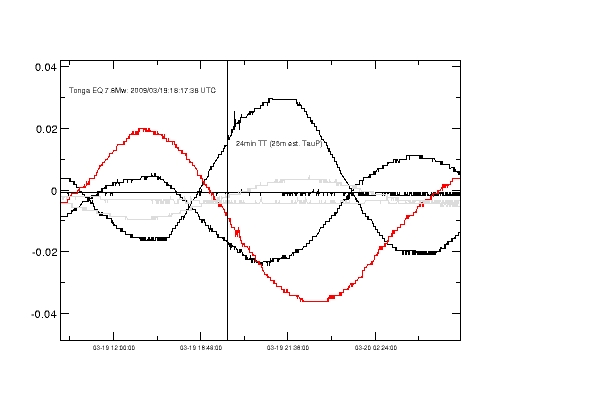
Maximum Amplitude of Tiltmeter Water Elevation Change During EQ vs Mw
